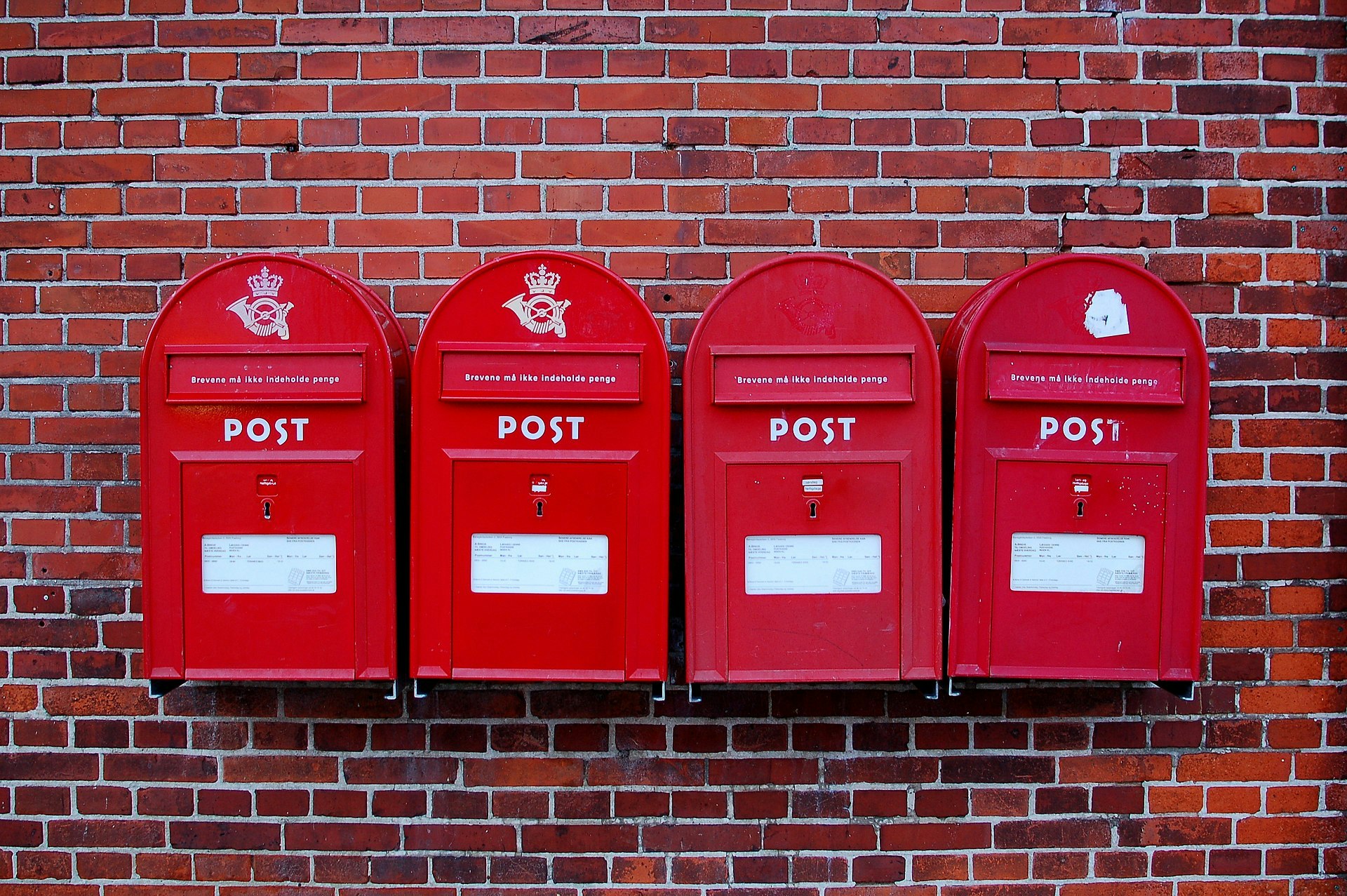Going Postal: The most overlooked touchpoint in your customer journey

How Postal Organizations drive brand appreciation with in-home advertising.
More email, anyone?
Not too long ago, companies got wise to the fact that consumers were easiest to reach by digital means of communication, at zero cost. Businesses were led to believe that email, with its near-instant delivery and low cost, was the only viable way to reach customers in the digital age.
Invoices were the first to go fully digital, virtually all brand-to-consumer touchpoints followed soon after. Today, brands converse with their customers mainly through mail and social media, and a lot less via physical mail.
A funny thing happened, though. As the digital floodgates opened, consumers quickly learned to ignore 90% of it. We humans have a built-in filtering mechanism that constantly checks for relevance and protects us from information overload. We open our emails less and less, often not making it past a cursory glance at the subject line before moving on, ignoring the email body, including its call to action. The result: emails quickly lost their immediacy and relevance and are now often considered a burden.
Brands are now realizing that, even if they are cheap and easy, digital communications don't always contribute to brand appreciation; audiences are increasingly ignoring a brand's digital messages.
Email is simply not very effective at making customers appreciate a brand. An email message -if it even makes it past an overzealous spam filter- will often sit ignored in an overflowing inbox indefinitely. Consumers have caught on to the fact that virtually all digital communication is automatically generated, and they are tuning out.
What you need to do to drive brand appreciation. And when to do it.
Recent Belgian research by bpost (The Belgian Post Office) has shown that there are a number of key things a brand can do to increase appreciation with their customers. The research (publicly available at https://pulsesurvey.be) identifies no less than 16 behaviors that drive brand appreciation. They vary per industry, but the top five across all industries are:
- The brand rewards loyalty
- The brand speaks personally to their customer
- The brand pleasantly surprises their customer
- The brand shows me I can trust it
- The brand keeps its promises
In addition, the bpost research found 19 specific moments in time when customers are most likely to respond positively to in-home advertising that aligns with the behaviors. Examples include welcoming a new customer, asking how things went after a purchase or a complaint, birthdays, anniversaries of the relationship with the brand, etc.
These key moments create a significant opportunity to drive brand appreciation when customers are at their most receptive; brands can reach out with higher value in-home advertising and stimulate brand appreciation, far beyond what just another email would do.
Making the difference with high-value in-home advertising
In-home advertising has some interesting characteristics that digital mass-media lack. Fewer items compete for attention in a physical mailbox, and in-home pieces are not as likely to be ignored as digital forms of communication: 89% of all in-home advertising is read, and readers dedicate almost two full minutes of their attention to it. It also cultivates appreciation with the brand: 56% of people feel valued by a brand when they receive a physical mail. Finally, it is persistent: 86% of readers keeps a relevant printed mailer in a visible place for 4.5 days on average (from Customer experience around in-home advertising, Gfk, 2017).
High-value physical communication gets read, it shows you care, and it is more persistent. Personalized at scale, printed communication is more likely to be saved and displayed so that people are exposed to it repeatedly.
Adopting a true omni-channel approach
Effective communication requires a cross-discipline approach. Digital means of reaching consumers, driven by CRM, including email campaigns, Facebook, Google Adwords, and other digital channels remain at the core of the omni-channel strategy. But even if these are practical, cheap and relatively easy to implement, digital is just digital, and more likely to be perceived as low value, or worse: ignored completely.
Adding just a few touch-points with higher value in-home advertising, at very specific stages of the customer journey makes it possible to not only to get noticed and read but can drive engagement and appreciation so digital messages are considered more relevant and become more likely to be read.
The pitfalls of adding channels
If you want to connect with consumers, going omni-channel is a no-brainer. How hard can it be, right? There are some caveats, however. Each channel has its own technical prerequisites, preferred file formats, and its own ways of personalizing. Unless you make the right technology choices, you may end up simply multiplying the work required to service the additional channels.
If you are not careful in selecting the technology stack you will use, you may end up with separate teams, using separate workflows and specialized tools, each building variations for a channel in your communication mix. Omni-channel (when it is not executed with efficiency in mind) can end up increasing the resource and budget requirements significantly when done at scale, and can quickly become a limiting factor.
One way to avoid the additional pressure, is to limit the omnichannel activities to only those situations when the perceived value for the consumer is extremely high. But you are at risk of limiting the potential impact because of the finite nature of budget and manpower.
By making the right technology choices, however, omnichannel activities can have a negligible impact on your operations, while still generating all of the benefits, if you keep some very specific requirements for the platform you use in mind:
- It must be intelligent enough to apply and protect brand identity guidelines, so you don't need a designer to manually create the deliverables.
- It must be able to personalize the documents to a high degree.
- It needs to plug into your existing martech stack seamlessly, and use the data you already have.
- It must be automated. The solution must be able to generate the individual, personalized pieces automatically, with little or no human intervention needed.
National Post Offices See the Opportunity
It seems that bpost is not the only postal organization that has become aware of the possibilities: we have several projects underway with national post offices. Taking control of the logistics of brands' omnichannel strategies makes sense for them: they have had the infrastructure to deliver the physical pieces in place for centuries.
By partnering with digital print partners, postal organizations can offer a whole channel of the omnichannel mix to businesses. Companies that want to reach out to their customers with personalized in-home advertising don't even need to build or maintain any of the processes required to deliver printed material. The only things that are required are a few extra workflows in a marketing automation system and a couple variable data printing API calls. The postal organization prints and delivers.
Audiences are beginning to show signs of fatigue when it comes to digital communication. If brands want to have a chance at reaching consumers and stimulating brand appreciation, they will have to go beyond the 100% digital approach, which is rapidly losing impact. Physical in-home advertising has been proven to drive brand appreciation effectively. Ironically, the first organizations to catch on to this are national post offices. They are gearing up to help brands reach their audience more effectively in various sectors, ranging from luxury goods to basic services.
Marketing,
Product
Piet Saegeman
Aug 8, 2019


